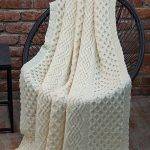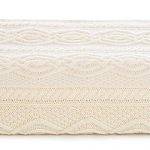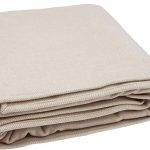Best Merino Wool Blanket
Wool is one of the oldest fibers known to man, but it is one that will never go out of style. Used over and over again in the bedding and clothing industry, the advantages brought forth by wool are unsurpassed, with Merino wool offering even more benefits compared to regular wool. Today, we’re going to learn more about this wonder fiber and then explore some of the best Merino wool blankets currently available on the market.
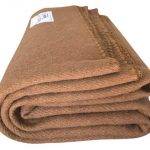
1. Woolly Mammoth Woolen Co. Blanket – Editor's Choice
- Sizes: 66 x 90 inches
- Patterns/colors: 3
- Weight: 4 pounds
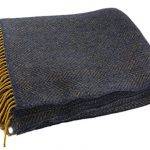
2. Biddy Murphy Irish Blanket
- Sizes: 54 x 71 inches
- Patterns/colors: 6
- Weight: 2.05 pounds
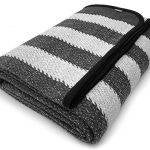
3. PuTian Merino Wool Camp Blanket
- Sizes: 57 x 79 inches, 63 x 51 inches, 63 x 79 inches, 63 x 87 inches
- Patterns/colors: 9
- Weight: 3.5 pounds
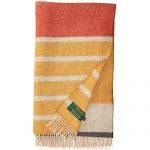
5. Biddy Murphy Store Wool Throw Blanket
- Sizes: 75 x 58 inches
- Patterns/colors: 2
- Weight: 1.75 pounds
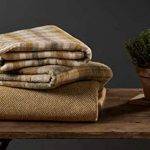
7. Moon Wool Throw Blanket
- Sizes: 73 x 55 inches
- Patterns/colors: 16
- Weight: 1.69 pounds
Table Of Contents
- Best Merino Wool Blanket
- 1. Woolly Mammoth Woolen Co. Blanket
- 2. Runner Up: Biddy Murphy Irish Blanket
- 3. Best for Outdoors: PuTian Merino Wool Camp Blanket
- 4. Honorable Mention: SAOL Store Blanket
- 5. Best for Cottages: Biddy Murphy Store Wool Throw Blanket
- 6. Best for Bedrooms: SAOL Blanket
- 7. Also Consider: Moon Wool Throw Blanket
- 8. Best Cashmere Blend: State Cashmere Blanket
- Merino Wool History
- Advantages of Merino Wool
- How Is Merino Wool Made?
- Types of Wool
- <strong>Conclusion</strong>
Best Merino Wool Blanket
1. Woolly Mammoth Woolen Co. Blanket – Editor's Choice
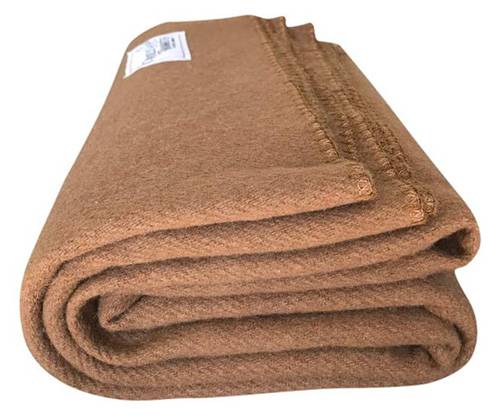
Highlights
- Sizes: 66 x 90 inches
- Patterns/colors: 3
- Weight: 4 pounds
Pros
- Excellent insulation properties.
- Contains 80% Merino wool.
- Superior durability.
Cons
- Not a soft blanket.
Probably one of the best Merino wool blankets that you’ll find online is this one right here. This blanket is made from 80% merino wool, without containing any recycled fibers (could be a good thing or a bad thing, depending on your priorities as a consumer. It has been dyed with a small amount of acrylic to give it added durability.
The milled finish on this blanket creates an inter-fiber felting system that’s ideal for outdoor activities. Its curved hem has a soft and polished finish. The natural elasticity of wool fibers helps keep the blanket wrinkle-resistant and flexible. It is also prone to holding its shape. The double-stitched edging of this blanket is made using a thick polyester thread that is designed to withstand years of use.
Who Should Buy This?
The Woolly Mammoth Woolen Co. is the perfect choice for those who prioritize insulation overall, being one of the best camping companions around.
2. Runner Up: Biddy Murphy Irish Blanket
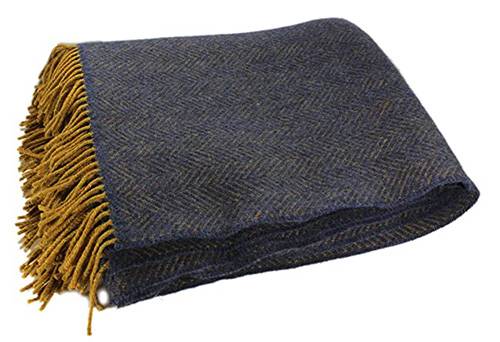
Highlights
- Sizes: 54 x 71 inches
- Patterns/colors: 6
- Weight: 2.05 pounds
Pros
- Made with 95% Merino wool.
- Cashmere blend for a softer surface.
- Quality construction and made by Irish artisans.
Cons
- Can’t be cleaned in a washing machine.
This long-lasting blanket is made from 95% merino and 5% cashmere. It’s the perfect pair for cuddling up in. It comes with a herringbone pattern, one with an interesting Irish background and influence. The herringbone pattern was popular in Ireland for centuries. This geometric pattern is similar to the bone structure of herring fish. The Biddy Murphy Irish blanket measures 54 x 71 inches and comes with 3-inch fringes on the sides.
If you want your Merino wool blanket to last for years, you need to pay attention to the caring instructions. It is very important to avoid putting quality wool blankets in the washing machine and dryer. Doing so will damage the product and cause it to become unusable. To keep it looking its best, hand wash it with warm water and soap, and then hang it up to dry.
Who Should Buy This?
If you want a more authentic and rustic-style throw blanket that you can use to cover up while sitting comfortably on the couch, the Biddy Murphy Irish is one of the best choices for you.
3. Best for Outdoors: PuTian Merino Wool Camp Blanket
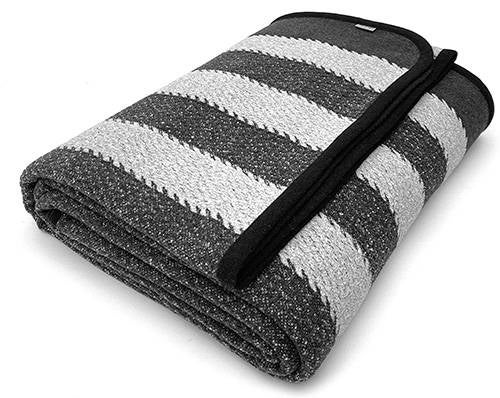
Highlights
- Sizes: 57 x 79 inches, 63 x 51 inches, 63 x 79 inches, 63 x 87 inches
- Patterns/colors: 9
- Weight: 3.5 pounds
Pros
- Benefits given by multiple fiber construction.
- Multiple size and color options available.
Cons
- Only contains 30% Merino wool.
Designed as a camp blanket, there is much to be said about what the PuTian has to offer. This durable and comfortable blanket is designed to be worn outdoors. The PuTian wool blanket is made from premium virgin Merino wool. This material is known for its warmth and softness. This durable blanket is great for camping under the stars, or for keeping warm in the wilderness. It’s also great for keeping the couch close when it gets cold.
It is available in four different size options, with the largest one measuring 63 x 87 inches. There are also nine colors and patterns to choose from, with the stripe pattern being one of the most popular ones.
Who Should Buy This?
If you’re looking for a blanket to keep you warm outdoors, whether we’re talking nights in front of the backyard fire pit or in front of a campfire in the woods, the PuTian is definitely worth the light of day.
4. Honorable Mention: SAOL Store Blanket
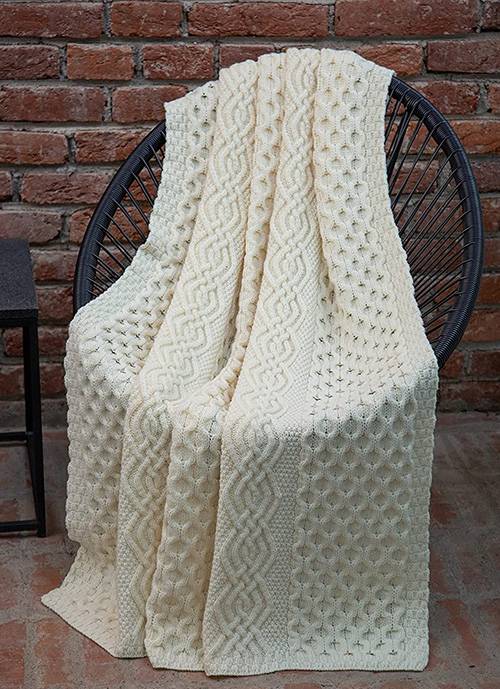
Highlights
- Sizes: 40 x 60 inches
- Patterns/colors: 3
- Weight: 2.35 pounds
Pros
- Made entirely from Merino wool.
- Gorgeous Irish stitching and pattern.
- Highly breathable.
Cons
- Not available in larger sizes.
This has to be one of our favorite blankets, especially since it’s made entirely out of Merino wool. It is considered to be a throw blanket but is large enough to cover a person when they fall asleep on the sofa and feel a little bit chilly. It has soft fibers and a beautiful weave and stitching that make this a product worth admiring.
It is designed with Aran stitching that’s reminiscent of Irish motifs, which is why this Merino wool blanket has an Irish influence in terms of design. You have three color options to choose from in this gorgeous blanket that measures 60 x 40 inches.
Who Should Buy This?
The SAOL Store blanket is the perfect product for anyone looking to purchase a blanket made entirely from Merino wool, and especially for those who want a quality insulating and gorgeous throw blanket.
5. Best for Cottages: Biddy Murphy Store Wool Throw Blanket
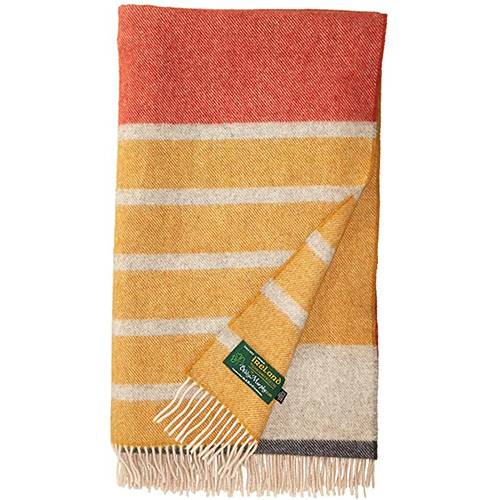
Highlights
- Sizes: 75 x 58 inches
- Patterns/colors: 2
- Weight: 1.75 pounds
Pros
- High-quality and durable construction.
- Authentic Merino wool blanket.
- Hypoallergenic.
Cons
- Available in a single size.
Biddy Murphy is a small business that sells Irish goods made from high-quality wool and this product right here completely matches that description. This blanket is made from 100% Merino Wool. It’s the perfect size to wear on its own or pair with another blanket. You do not need to know their exact size when you buy an authentic Irish wool throw pillow. This blanket is made by John Hanly and Co., and it’s bound to be an heirloom.
It’s lighter compared to other Merino wool blankets, weighing less than two pounds. It’s a very soft product, offering high breathability, but also being able to insulate heat very well, which is what any good wool blanket should be able to do.
Who Should Buy This?
Those of you looking for a durable wool blanket with fringes and a design that gives it a traditional appeal are going to love this Buddy Murphy Store Merino blanket.
6. Best for Bedrooms: SAOL Blanket
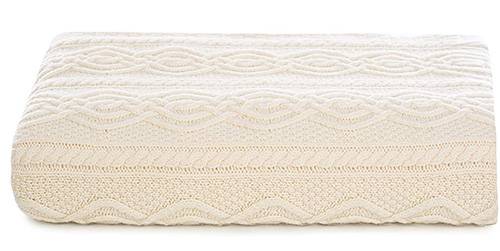
Highlights
- Sizes: 92 x 78 inches
- Patterns/colors: 2
- Weight: 6.19 pounds
Pros
- Made entirely with Merino wool.
- Large King-size blanket.
- Versatile use.
Cons
- Prone to shedding.
This cable throw is made from durable and lightweight materials that will keep you warm and protected during cold seasons. The SAOL blanket is made from 100% super soft merino wool, which gives it a soft and elegant feel. It’s pre-washed and is ideal for minimizing shrinkage. This throw features cable and diamond patterns, which are inspired by the fishing boats and farming fields on the remote islands of Ireland. It is made from the same natural color as the Aran sweaters, and it’s versatile enough to pair with any home décor.
Who Should Buy This?
If you liked the SAOL throw blanket we showed you earlier but were hoping to purchase it in a larger size, this is the King-size version option you have at your disposal.
7. Also Consider: Moon Wool Throw Blanket
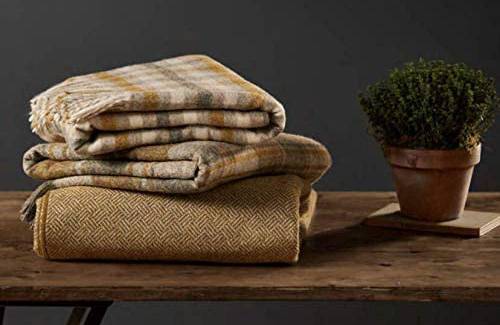
Highlights
- Sizes: 73 x 55 inches
- Patterns/colors: 16
- Weight: 1.69 pounds
Pros
- Quality wool sources.
- Beautiful fringe edge design.
- 16 color and pattern options to choose from.
Cons
- Fabric is not very soft.
When you’re purchasing a Moon wool blanket, you’re buying a product that has an impressive story and a lot of hard work put into making sure that you’re getting the best Merino lambswool available. Quality starts with the farm, as the wool for this blanket is produced from animals that have been reared on a different diet.
The wool that this company buys comes from either scoured or cleaned broken tops, which ensure that the fleeces are free of impurities. The raw wool is then dyed using a combination of pressure, temperature, and time, which is only used to ensure that a unique color palette is retained. The manufacturer claims they can dye over 500 different shades and hues of wool. This process is essential to creating beautiful textiles. The Moon mill’s Finishing process produces a soft handle that is made from pure Yorkshire spring water.
Who Should Buy This?
When you want a quality Merino wool blanket that’s durable and doesn’t cost as much as the others, the Moon blanket is worth checking out.
8. Best Cashmere Blend: State Cashmere Blanket
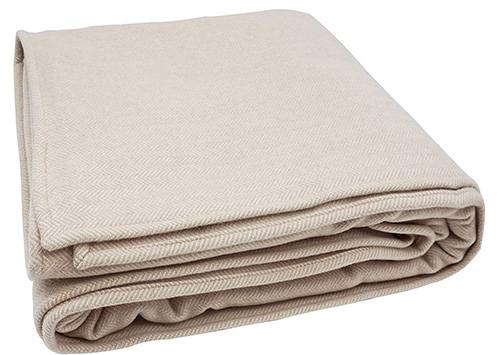
Highlights
- Sizes: 90 x 60 inches
- Patterns/colors: 2
- Weight: 3.08 pounds
Pros
- Softer than most Merino blankets.
- Dense weave.
- Quality long-staple fibers.
Cons
- Could be even softer considering its 10% cashmere.
We wanted to end this series of short reviews with a blanket that’s softer than the others, but that’s because of the 90 percent Merino wool and 10 percent Mongolian cashmere blend that’s used in its construction. While it’s more expensive compared to some of the other options we’ve looked at today, this two-ply yarn delivers a dense weave which makes it a bit surprising that such a thin blanket can insulate and trap heat so well. It has a herringbone weave which isn’t new to the Merino wool blanket world, but it’s always a nice feature to see.
Who Should Buy This?
When you have your heart set on a thin but insulating blanket that’s made with Merino wool, this one might be the best option for you.
Merino Wool History
The Merino is a sheep breed that is characterized by its fine soft wool. During the 18th century, flocks were sent to various European countries, including Hungary, France, the Netherlands, and Saxony. The Merino has gained widespread acceptance throughout the world. Numerous breeds and variants have been developed from the original type, including the Booroola Merino and the Delaine Merino.
The origin of the Merino breed can be traced back to when North African sheep started being imported. It is believed that this practice was carried out in the 12th century in Extremadura. The first theory states that North African rams helped improve the breed, while the second claims that it originated from an early stock of North African sheep.
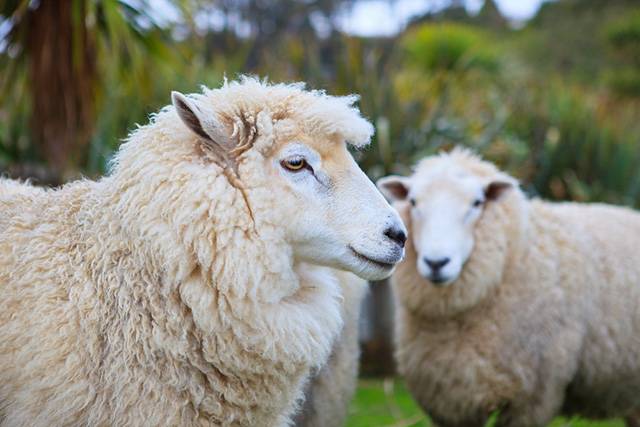
Sheep were not considered important in the Islamic Caliphates of Cordoba. During the time of the Marinids, which is when the nomadic Zenata Berber tribe had vast sheep flocks in what would eventually become Morocco, they did not have a lot of control over the animals. They may have brought new breeds into Spain, but there is also no evidence that they practiced selective breeding.
The second theory states that the Merino breed was created with a strong Spanish heritage. This is supported by the absence of definite Merino wool in the country before the 15th century. It was also possible that the churro, which was the main native breed in Spain before the Roman times, was crossed with a fine wool breed.
Even if Spain exported wool to Italy, the Low Countries, and England in the 13th and early 14th centuries, it was only used to produce cheap clothes. By the mid-15th century, Spain was acknowledged for its fine wool.
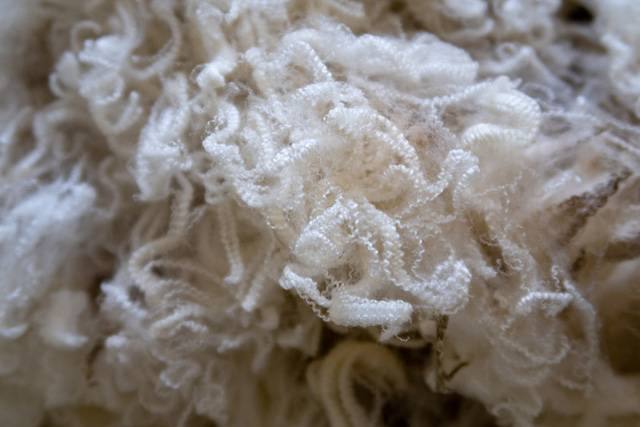
Until the 16th century, the best English wool was not as fine as modern Merino wool. During the 13th and early 14th century, most Spanish wools were used for making cheap, coarse and light fabrics. Later in the period, similar wool was exported from the Castilian ports of San Sebastian and Santander.
Spain had a virtual monopoly on the fine wool market during the 15th and 16th centuries. This was partly due to the fact that most of England’s wool was woven and made into textiles by the 16th century. Many of the Castilian Merino flocks were owned by nobles or the church. Although Alfonso X believed that granting the urban elite transhumant rights would create additional income for the royals, he was not able to do so.
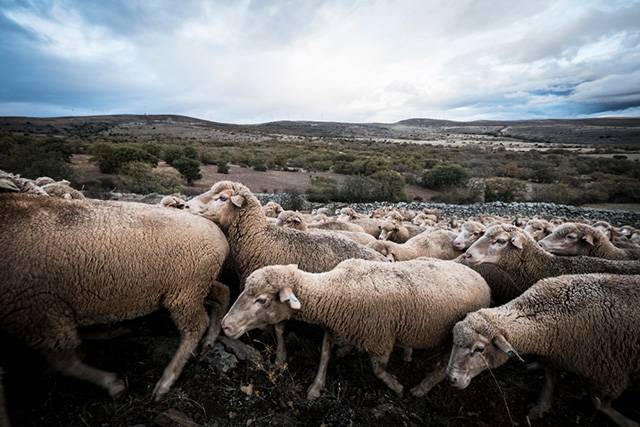
The transhumant sheep lived in the southern Spanish plains and the northern highlands during winter and summer. They migrated from Castile and Len each year and were controlled by the Mesta. The three strains that became the world’s first Merino flocks were the Royal Escurial, the Negretti and the Paula. Among the studs from the US that were highly important were the Aguires, Mantarcosm and Infantado.
There are now two populations in Spain, one of which is the commercial Merino flocks, which are located in Extremadura. The other is the historical Spanish Merino strain, which was developed and conserved in a center near Cordoba. The commercial flock shows considerable genetic diversity, which is probably due to the cross-breeding of non-Spanish Merino breeds.
In 1765, the Germans crossed the Spanish Merino with the Saxon sheep in order to develop a fine type of Merino. By 1804, the region had more than four million Saxon sheep. In 1802, David Humphreys, the US Ambassador to Spain, reintroduced the Vermont strain of sheep into North America through the use of rams and ewes from Portugal. The Napoleonic wars almost wiped out the Spanish Merino industry. In 1810, the ban on the export of live animals was lifted.
Advantages of Merino Wool
Needless to say, Merino wool brings forth all the advantages that you get from wool as a fabric overall, including:
The fact that it’s natural
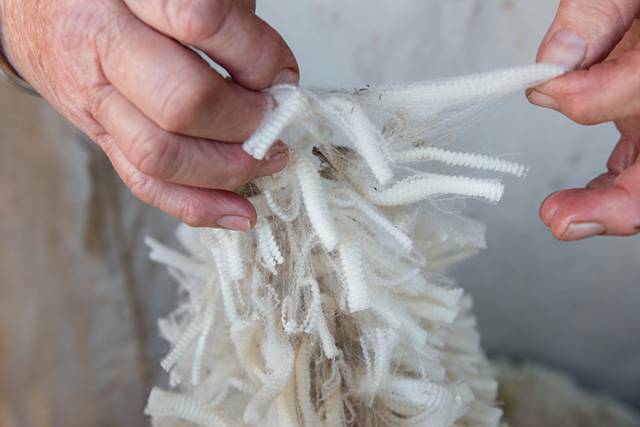
Merino wool is made from natural compounds and amino acid proteins, resulting in a renewable type of fiber, with each sheep producing four to five pounds of wool each year. Furthermore, this fiber has evolved through time to keep sheep happy in adverse conditions. It’s no problem for these joyful creatures to hang out in temps ranging from five to 95 degrees. It’s a very remarkable fiber.
Its thermoregulation capacity
Wool is wonderful at maintaining a steady body temperature. In warmer temperatures, it wicks moisture away from the body and doesn’t leave you in a pool of your own sweat. During the winter, the fibers trap air and act as an insulating barrier that helps trap your body heat underneath and keep the cold temperatures away.
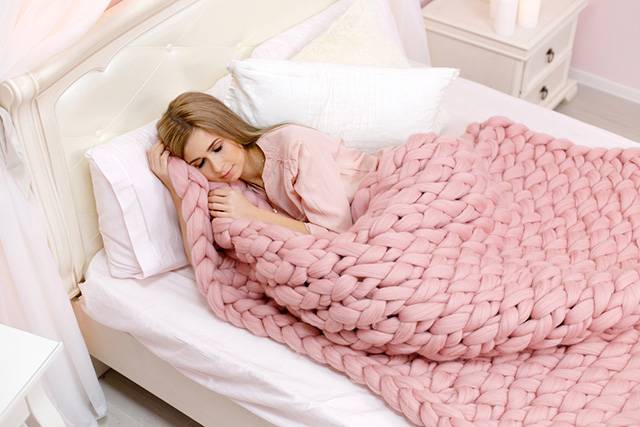
The fact that it doesn’t trap odors
Merino wool is special in that it absorbs bacterial odor, encapsulating it and preventing it from being released into the wear. This means you may wear Merino wool item products (whether we’re talking blankets or clothing items) for longer periods of time. Merino wool is ideal for travel or longer expeditions when you don’t have a lot of space to pack.
Its softness
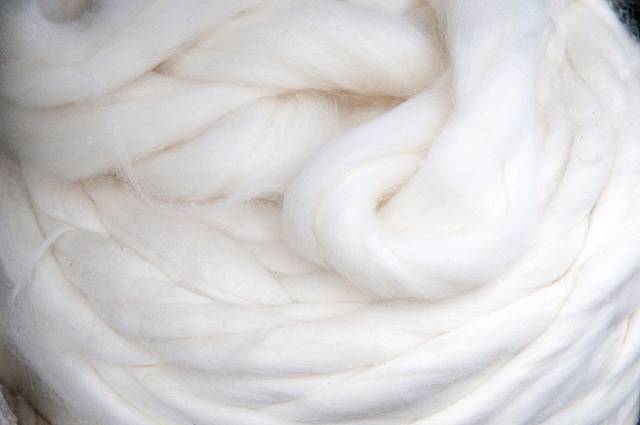
The diameter of a single Merino wool fiber is three times smaller compared to that of a human hair. Because it is so thin and lightweight, it can’t even stand up to its own weight. As a result, it’s supple and soft as a cloud.
The fact that it’s biodegradable
After about a year under the ground, Merino wool vanishes. When you’re done with your gear, the environment will recycle this fibrous protein made up of amino acids. As a result, nutrients and carbon are released back into the soil.
How Is Merino Wool Made?
Australian wool growers use sustainable agricultural practices to create the world’s best wool from Merino sheep. This type of wool is known for being a natural fiber created throughout the span of an entire year by Merino sheep. These sheep have a very specific diet, as they consume a basic blend of natural components (from grass to fresh air). Wool is a truly renewable fiber since these sheep create new fleece every year.
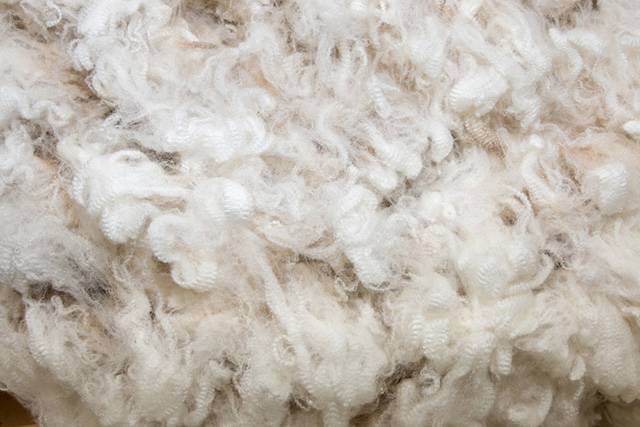
If you already heard about keratin (a natural protein found in human hair), you might be interested in knowing that wool also contains keratin, as well as a minor quantity of fat, calcium, and sodium. Scales cover the surface of each fiber, which are vital in the production of wool clothes and felts.
Types of Wool
Wool isn’t all created equal. Wool can be softer than cashmere, but it can also be harder and more robust, making it ideal for bedding items and carpets. Based on the micron of each fiber, wool can be categorized into three groups. One micron equals one millionth of a meter, and fiber length is measured in millimeters. These are the primary metrics used to judge the quality and application of wool.
Merino sheep produce wool with the finest microns, which is used to make high-quality textiles and knitting yarns. The world’s most prestigious fashion houses place a high emphasis on fine wool.
Medium micron wool can be made from a Merino breed or by crossing two breeds. Medium wools are used in a wide range of woven garments, knitting yarns, and home furnishings.
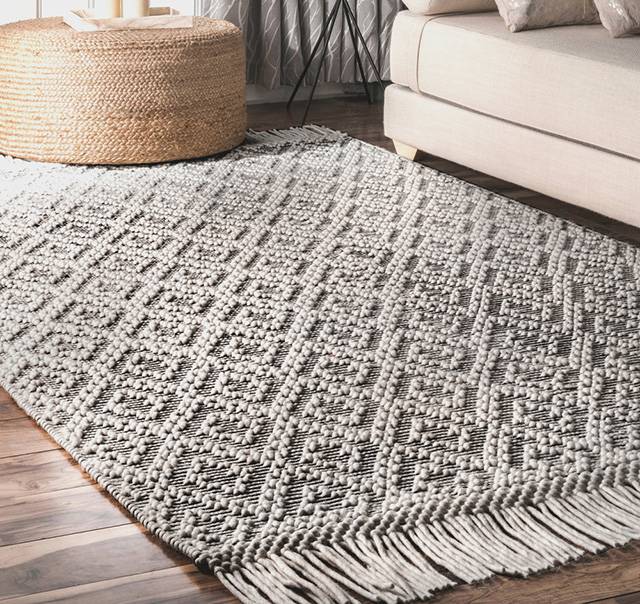
Broad wool is produced by a variety of sheep breeds. These breeds are frequently referred to as dual-purpose breeds since they are raised for both meat and wool. Known for being strong and durable, broad wool is suitable for items such as carpets.
Conclusion
Merino wool is a natural and warm fabric made from sheep wool. It has plenty of applications, and its versatility makes it the ideal choice for a wide range of products, which is why Merino wool is used to make everything from blankets to winter clothing. Once worn by royalty, Merino wool has become an accessible luxury. With so many advantages and disadvantages, it is no wonder why so many people are now buying these fabrics.
Photo credit: Ikram Faisal/Shutterstock; Design gallery/Shutterstock;
Kira Volkov/Shutterstock; stockphoto mania/Shutterstock; csp/Shutterstock;
Nesolenaya Alexandra/Shutterstock; Nfoto/Shutterstock;

